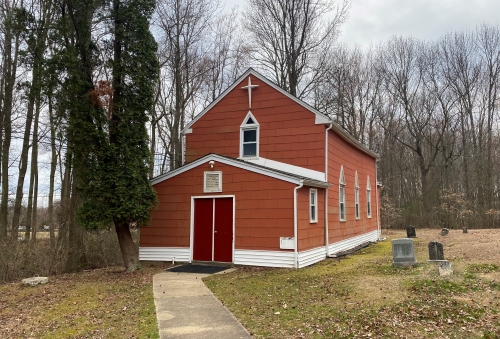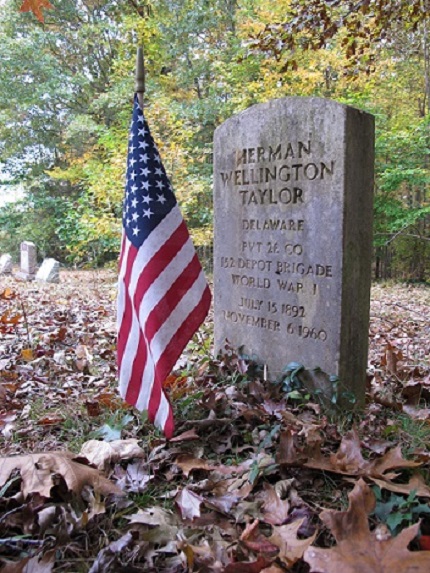Iron Hill area church added to National Register
By Madeline Dunn, Delaware Division of Historical and Cultural Affairs’ National Register coordinator-historian
The Delaware State Historic Preservation Office in Dover has received notification from the National Park Service that the African Union Church and Cemetery of Iron Hill (now known as St. Daniel’s Community Church of Iron Hill) was officially listed in the National Register of Historic Places on Sept. 9, 2021. The church is located on the slopes of Iron Hill at 1578 Whittaker Road in Newark, Delaware.

The National Register nomination was prepared by the University of Delaware’s Center for Historic Architecture and Design in consultation with, and consent of, trustees from St. Daniel’s Church. Through archival research and physical analysis of the building’s historic fabric, they concluded that the church, constructed between 1852 and 1856, is locally significant as the oldest known surviving free Black church in northern Delaware that was built as part of Peter Spencer’s African Union Church movement.
Spencer, a free African American resident of Wilmington, became dissatisfied with the Methodist denomination in 1805. Through an act of incorporation in Delaware in 1813, he legally established a free and independent church called the Union Church of Africans. In 1852, approximately 10 years after his death, his church was reorganized under the name of the Union American Methodist Episcopal (U.A.M.E.) Church.
As a Spencer church, the structure is representative of the religious practices and culture of rural Black communities in New Castle County, Delaware. Built on land given to the church by freeman William Walker in 1852, the present church building functioned as one of the community’s most important institutions and now stands as the only known extant building of the antebellum-era, free-Black community at Iron Hill. This historic house of worship played a key role in forming and sustaining the community at Iron Hill from the antebellum period through desegregation during the late 1960s.
Architecturally, the building reflects the small size, impermanence and plainness of rural Spencer churches and, more generally, is representative of spaces in which New Castle County’s Black population worshipped during much of the 19th and 20th centuries. Modifications to the building reflect the popularity of early-20th-century vernacular Gothic Revival renovations, as well as updates with affordable, mass-produced building materials newly available in the mid-20th century.
A small cemetery, located north of the church, features a variety of gravestones some of which are simple upright, cambered granite or marble markers with little ornamentation. A few of the late-20th century stones are carved with hearts or religious iconography like Bibles, crosses and doves. The oldest surviving gravestone, with the earliest legible death date, is for Elizabeth Sanders who died in 1865. There are also three military-issued gravestones belonging to former congregation members — Pvt. Frederick Wright who served in the Civil War; Pvt. Herman Wellington Taylor who served in World War I; and Pvt. Willard F. Earl who served in World War II.

The National Register nomination of the African Union Church was reviewed and recommended for listing by the New Castle County Historic Review Board and the Delaware State Review Board for Historic Preservation. Funding for research and preparation of the nomination was provided by the National Park Service through a Historic Preservation Fund sub-grant awarded to New Castle County (a Certified Local Government) and managed by the State Historic Preservation Office.
The National Register of Historic Places is the official federal list of historic properties reflective of their significance in American history, architecture, archaeology, engineering and culture. By federal law, National Register listings assist in preserving historic properties by recognizing and acknowledging their importance, making property owners eligible to apply for preservation tax incentives, and encouraging the preservation and protection of a listed property’s significance when federal and federally assisted projects are being considered as part of planning and development activities. Questions about the National Register program should be directed to the Delaware State Historic Preservation Office at 302-736-7400.
Madeline Dunn has served as the Division of Historical and Cultural Affairs’ National Register coordinator-historian since 2009. A lifelong Delawarean, she joined the division in 1973 and has served in a wide variety of positions including architectural site surveyor for the State Historic Preservation Office, and as curator of education from 1975 to 2009.



